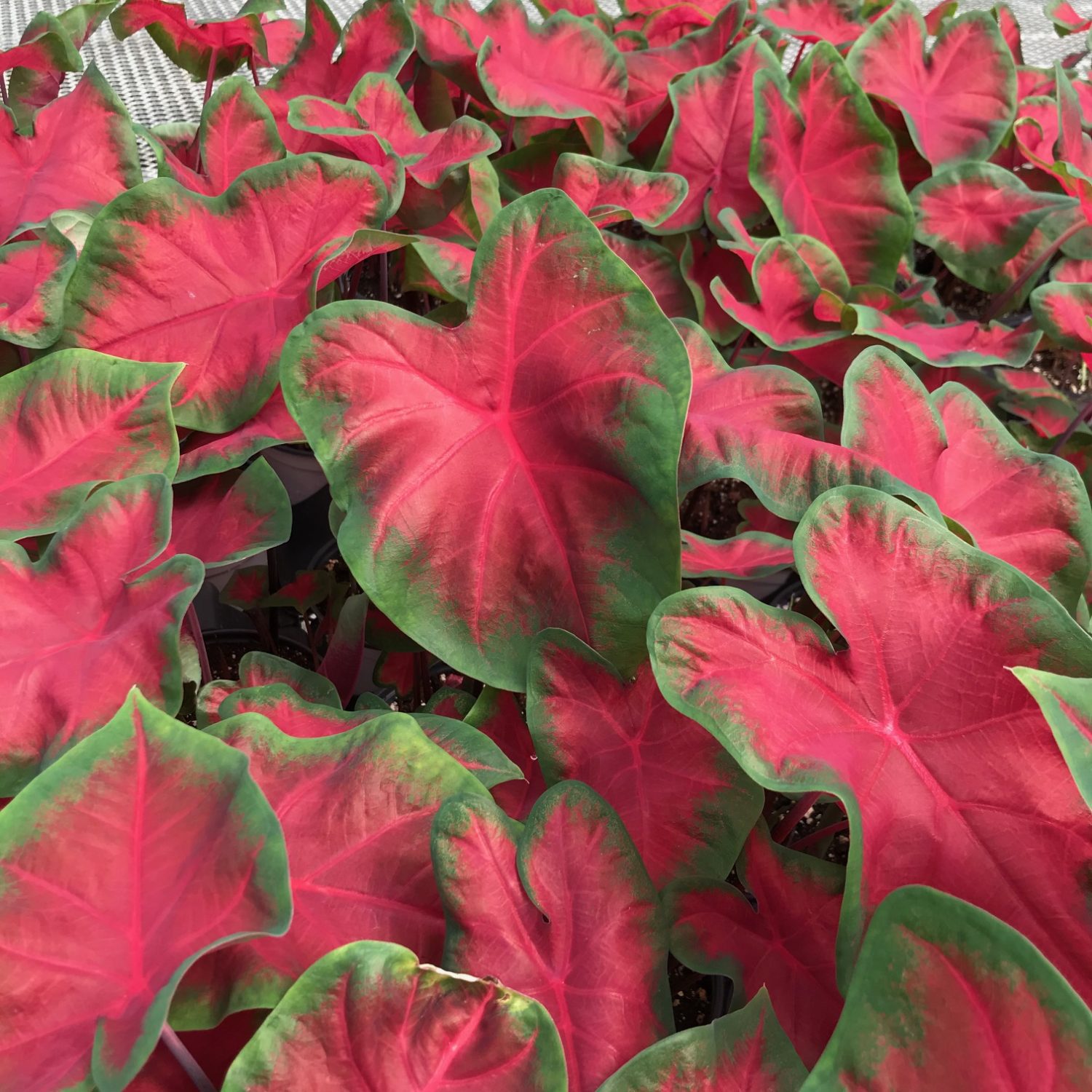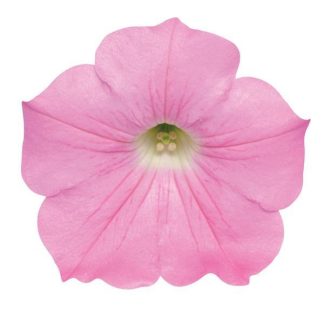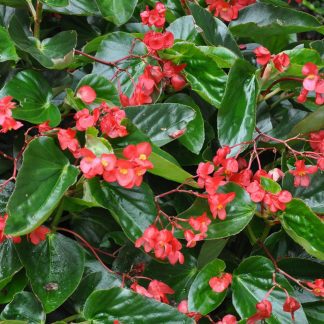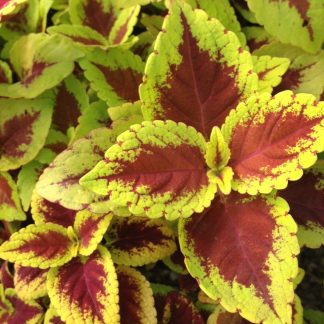Description
Brushing Up Against Bold Beauty: Caladium ‘Freida Hemple’
Welcome Into a World of Living Color
Step into a shady corner with us. Hear the hush of summer leaves. Now catch your breath. A splash of bright red appears, trimmed in dark green like fine ribbon on a gift. That is Caladium ‘Freida Hemple.’ She is all drama, yet gentle to the touch. This guide gives you everything you need to grow, enjoy, and share her glowing heart-shaped leaves. We will keep the words simple, the tone friendly, and the steps clear, so any gardener—new or seasoned—can bring her home.
Meet Caladium ‘Freida Hemple’
- Family: Araceae (aroid family)
- Type: Tropical tuber (often called a bulb)
- Leaf Size: 6–12 inches long, 5–8 inches wide
- Colors: Cherry-red centers, deep green borders, thin silver veins
- Height & Spread: 18–24 inches tall, 12–18 inches wide
- Growth Habit: Clumping, upright yet softly arching
Caladiums come from the warm forests of Brazil. Over many years, plant lovers selected special forms for brighter leaves. After more than a century of trial and error, ‘Freida Hemple’ rose to fame. Her leaves look hand-painted. The red center glows like a stained-glass window held to the sun, while the dark edge frames every vein. In other words, she brings instant art to any spot that needs a lift.
Unlike flowering plants that bloom once and fade, caladium leaves are the show. Each one lasts weeks, even months, if given the right care. Because the plant comes from rich forest soil, it asks for warmth, steady water, and good food. Treat it well and you will enjoy a parade of new leaves from late spring until fall.
Why We Love Its Colors
Color does more than decorate. It stirs feeling. Bright red signals energy and warmth, while deep green brings calm. ‘Freida Hemple’ unites both moods on one leaf. Put her near a dark-leaved coleus, and the red pops even more. Place her beside lime-green sweet potato vine, and the edge turns into a bold outline. These contrasts help us see the plant— and the whole bed— in a fresh way.
But most of all, her colors hold up in shade. Many red flowers fade without sun. ‘Freida Hemple’ glows under tall trees, on a covered porch, or by the north wall of a home. This makes her a star for people whose yards miss the midday blaze. She even shines indoors near a bright window, turning any room into a mini jungle.
The Perfect Place in Your Garden
Caladiums grew under tall tropical trees, so they still crave filtered light. Aim for bright shade or morning sun plus afternoon shade. In deep shade the red may darken, but leaves stay large. In strong sun the color lights up, yet edges may scorch. Instead of guessing, test two or three spots for a season, then note the best leaf color and size.
Choose a site with loose, well-drained soil rich in organic matter. Heavy clay holds water and may rot the tuber, while pure sand dries too fast. Mix in compost, shredded leaves, or peat moss to reach a crumbly feel. A raised bed works well if your ground stays soggy after rain.
Soil warmth matters more than air warmth. Tubers will not sprout until soil sits near 70°F (21°C). Use a soil thermometer or wait until nighttime lows stay above 60°F. Planting too early risks rot. Plant too late and you shorten the leaf season. Aim for mid-to-late spring in most zones.
Warm Soil and Good Water
Set each tuber 2 inches deep, knob side up, with at least 8 inches between neighbors. Water the hole well, then backfill. Keep the bed moist but not soaked while sprouts form. Once leaves unfurl, switch to a “even-moist” routine: neither drought nor standing water. A simple rule is to give one inch of water per week, whether from rain or a hose. In hot spells, check soil daily. Dry soil leads to limp leaves that may fold in half. Water deeply in the morning so stems stand firm by noon.
Mulch helps. Spread 2 inches of fine bark or shredded leaves around the plants, keeping it off the crowns. Mulch slows water loss, stops soil splatter, and keeps soil cooler on blistering days.
Feeding for Big Leaves
Large, lasting leaves need steady food. Use a balanced, slow-release fertilizer (such as 14-14-14) at planting time, following label rates. This feeds roots each time you water. Halfway through summer, scratch a second dose into the soil surface and water well.
If you prefer liquid food, mix a water-soluble plant food (roughly 20-20-20) at half strength every two weeks. Pour at soil level, not over leaves, to avoid burn spots. In other words, feed often but lightly to keep growth even.
Keeping Pests Away
Caladiums face few enemies, yet some issues pop up:
- Snails and slugs chew holes, mainly in damp beds. Lay copper tape, sprinkle iron phosphate bait, or set shallow beer traps to catch them.
- Aphids cluster on stems and leaf backs, sucking sap. Rinse them off with a sharp water spray or use insecticidal soap twice a week until gone.
- Spider mites thrive in dry heat, leaving tiny yellow dots. Increase humidity with light misting and apply neem oil if needed.
- Leaf scorch shows as brown edges caused by too much sun or fertilizer burn. Move pots to shade or flush soil with clear water to remove salts.
Watch plants each week. Early care keeps problems tiny instead of big.
Growing in Pots
Containers let you shift color where you want it—porch, patio, or indoor nook. Pick a pot with drainage holes at least 12 inches wide and deep. Fill with a peat-based potting mix and a handful of perlite for extra air space. Plant the tuber like in the ground, and water until liquid flows from the bottom.
Place the pot in bright shade and turn it a quarter turn each week for even growth. Potted soil dries faster, so test moisture with your finger each morning. If the top inch feels dry, water until you see drainage.
Want a lush mixed planter? Pair ‘Freida Hemple’ with trailing tradescantia, white-flowered impatiens, or chartreuse coleus. The upright caladium adds height, while the spillers soften edges.
When night temps dip below 55°F (13°C), move pots indoors. Clean leaves with a damp cloth to remove insects, then set near a sunny east window. Water sparingly over winter; allow the top two inches to dry before watering again.
Winter Rest and Rebirth
Caladiums sleep when days grow short. Leaves pale, then droop. That signals the tuber to store food for next year. Instead of tossing the plant, let it rest:
- Stop feeding in early fall.
- Reduce water once leaves yellow.
- Cut leaves back to 1 inch when all are limp.
- If in the ground and you live below USDA Zone 9, lift the tuber with soil attached.
- Dry in a warm, airy spot for one week.
- Store tubers in dry peat or sawdust inside a paper bag at 60–70°F.
Check bags monthly. Toss any soft or moldy parts. After more than three months of rest, tubers are eager to wake. Replant next spring when soil warms, and the cycle starts again.
Propagation Made Easy
You can share this beauty with friends by dividing tubers. Each tuber has several eyes (growing points). In late winter, remove the tuber from storage. With a clean knife, slice into pieces, making sure each chunk has at least one eye and a bit of the basal plate. Dust cuts with garden sulfur to block rot. Let pieces dry 24 hours, then plant as usual. Smaller pieces may sprout later but soon catch up.
Design Ideas and Companions
‘Freida Hemple’ fits many garden scenes:
- Woodland edge. Plant among hostas, ferns, and astilbes for a layered shade bed.
- Front porch planters. Combine with white begonias and ivy for a bride-like calm.
- Tropical patio. Pair with banana, elephant ear, and red canna for a jungle mood.
- Cut-leaf focus. Line a path with alternating ‘Freida Hemple’ and dusty miller. Silver leaves make the red center blaze.
- Children’s garden. Kids love bold color. Create a “painted leaves” corner with polka-dot plant and purple heart seta.
Caladiums also slip under taller shrubs where grass will not grow. Use them as living mulch. After more than one season you will spot new pockets of color to fill.
Troubleshooting Quick Guide
| Symptom | Likely Cause | Simple Fix |
|---|---|---|
| Leaves small, pale | Poor light or low nutrients | Move to brighter shade; give balanced feed |
| Brown tips | Low humidity or salt build-up | Mist leaves; flush soil with clear water |
| Yellow leaves mid-summer | Natural aging or tuber rot | Remove old leaves; check soil drain |
| No sprouts weeks after planting | Soil too cold or tuber upside-down | Warm soil to 70°F; replant correctly |
| Chewed holes | Slugs or snails | Handpick at dusk; use iron phosphate bait |
Remember, most issues trace back to water, light, or food. Adjust those first.
Vibrant Paths Ahead
You have now walked through every step of growing Caladium ‘Freida Hemple.’ From the first bright sprout to the final fiery leaf, this plant shares color without asking for complex care. Give her warm soil, dappled light, steady drink, and gentle food. She will return the favor with months of living art. So gather your tools, invite some friends, and paint your garden red and green. New memories—and fresh leaves—are waiting just around the bend.




